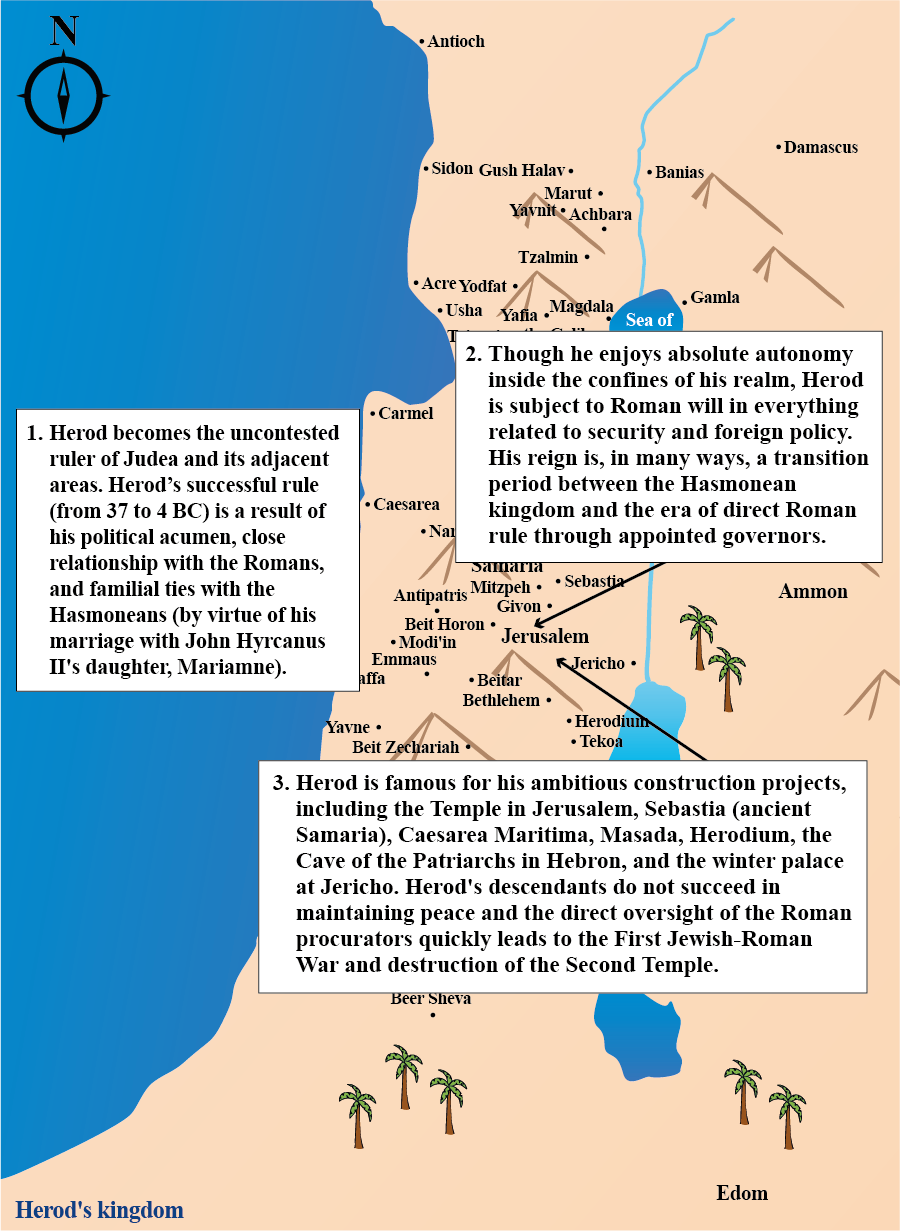
From 37 to 4 BC
Macrobius, Saturnalia, Book II, Chapter 4, Section 11
Herod, who is of Idumean descent, became king of Judea and its adjacent areas, remaining its uncontested ruler from 37 to 4 BC. Herod’s long and successful rule is a result of his political acumen, close relationship with the Romans, and familial ties with the Hasmoneans (by virtue of his marriage with John Hyrcanus II’s daughter, Mariamne). Herod becomes known for enforcing a cruel and totalitarian regime. However, though he enjoys absolute autonomy inside the confines of his realm, he is subject to Roman will in everything related to security and foreign policy. Herod is famous for his ambitious construction projects, including the Temple of Jerusalem, Sebastia (ancient Samaria), Caesarea Maritima, Masada, Herodium, the Cave of the Patriarchs in Hebron, and the winter palace at Jericho,. In many ways, Herod’s reign signifies a transition period between the Hasmonean kingdom and the era of direct Roman rule through appointed procurators. Herod’s descendants do not manage to maintain peace and the direct oversight of Roman procurators quickly leads to the First Jewish-Roman War and destruction of the Second Temple.
Herod’s reign is prosperous, yet his descendants fail to learn from him or reproduce his successes. As such, the kingdom subsequently falls under Roman control. When egotistical forces are not restrained, deadly divisions and endless intrigue will result. Herod’s rule is characterized by a pursuit of power and material greed. This leads to spiritual decline and ultimately causes the kingdom’s collapse and destruction.
“On hearing that the son of Herod, king of the Jews, had been slain when Herod ordered that all boys in Syria under the age of two be killed, Augustus said, “It’s better to be Herod’s pig than his son”” (Macrobius, Saturnalia, Book II, Chapter 4, section11)

Whether from teachers or experience, the lessons we learn guide us toward leading a masterful life.

